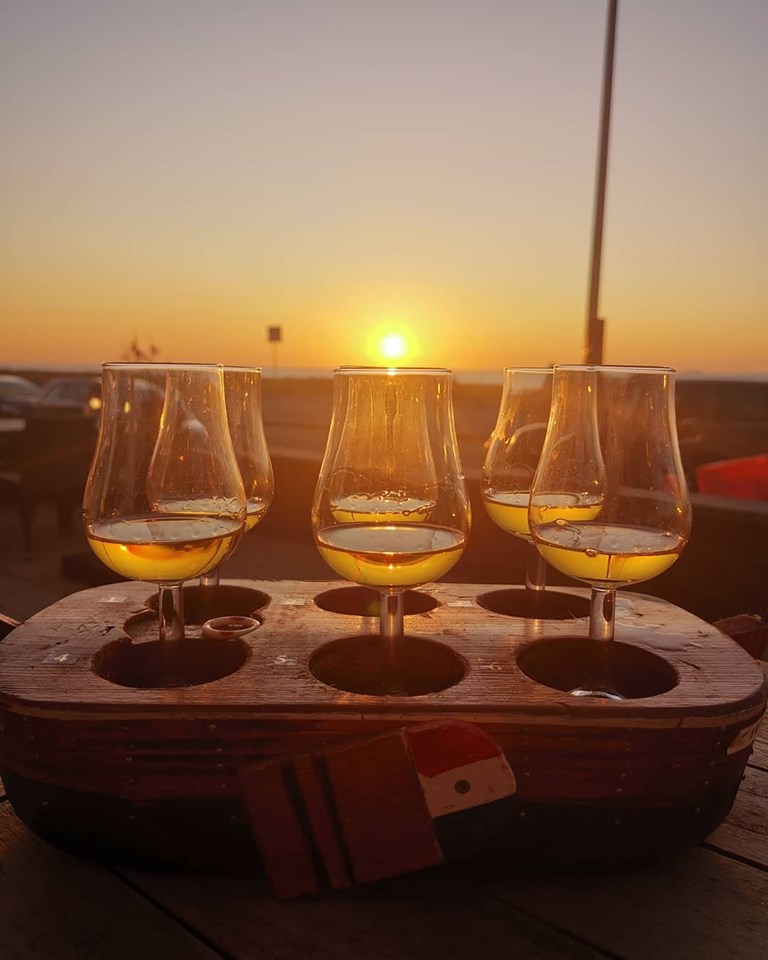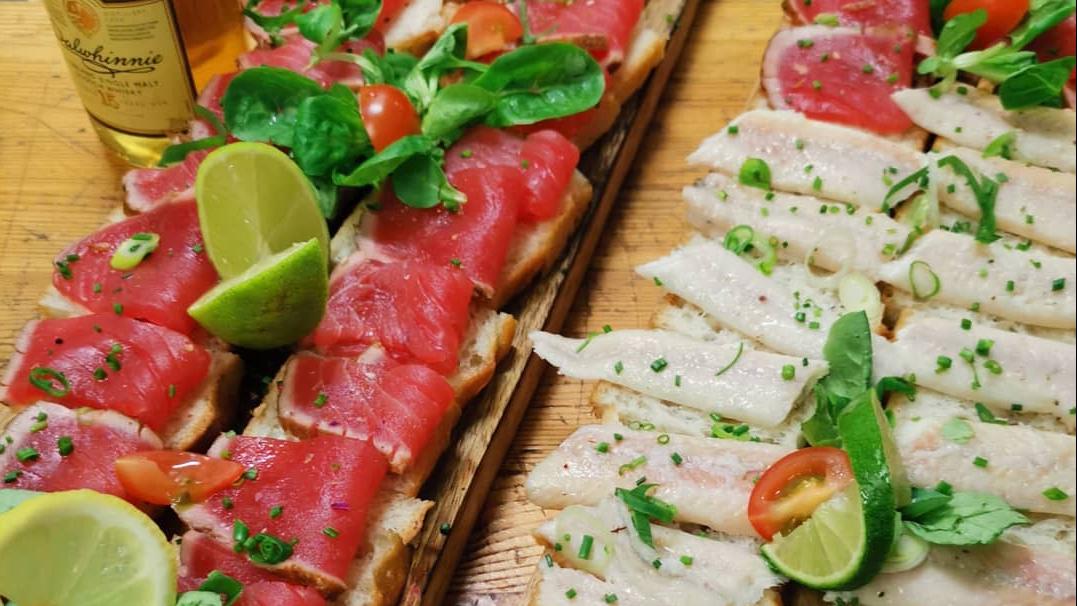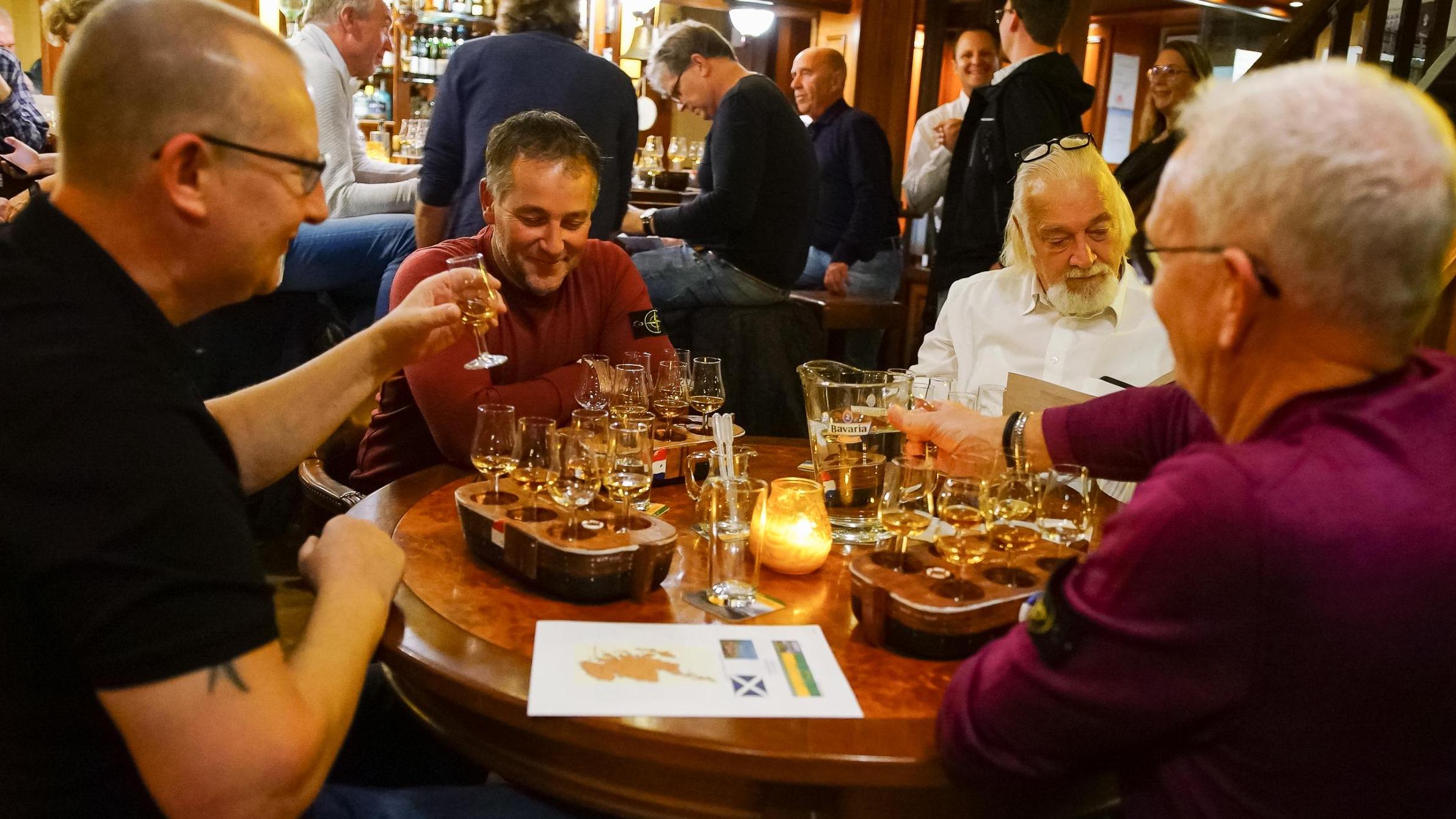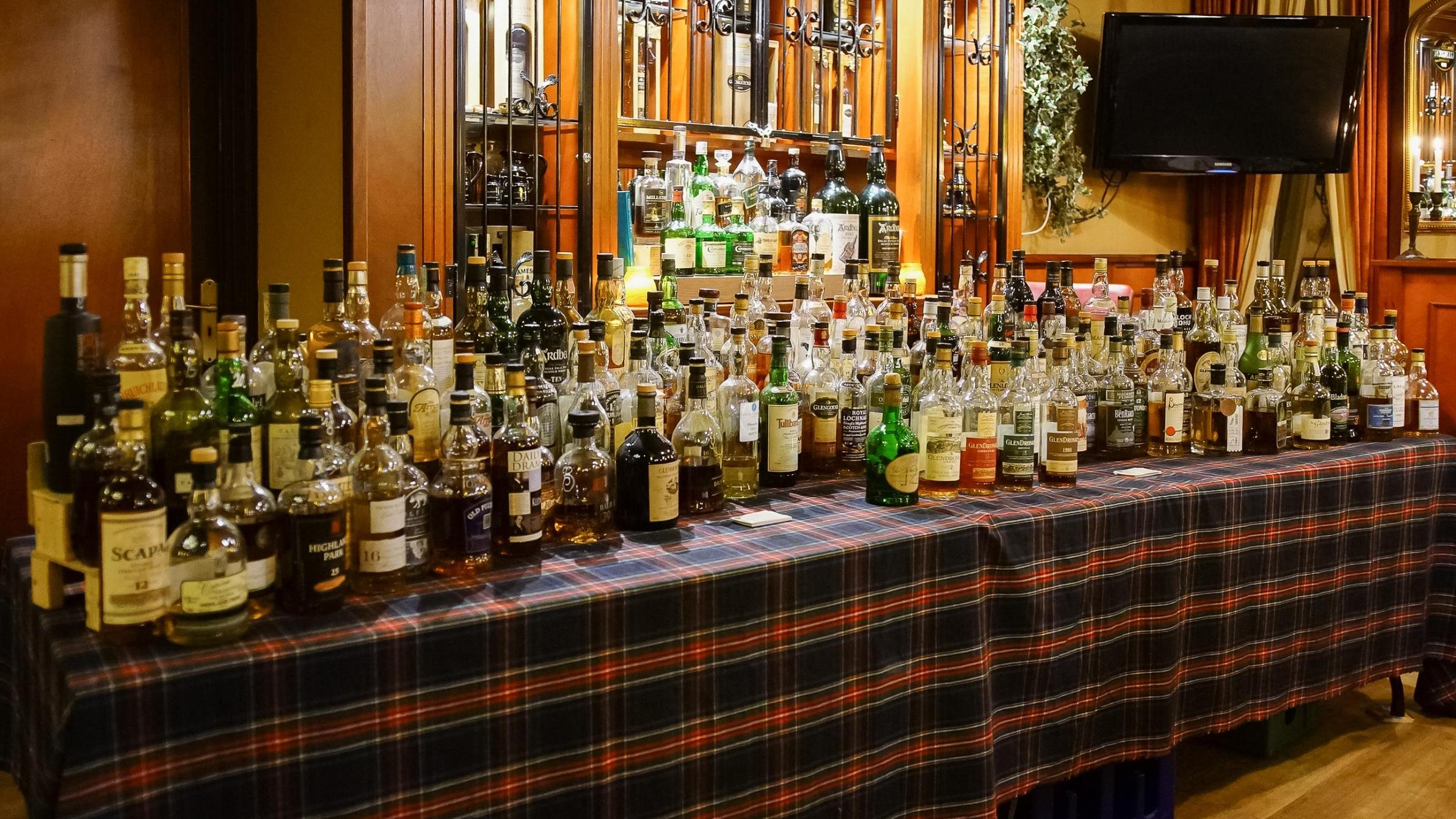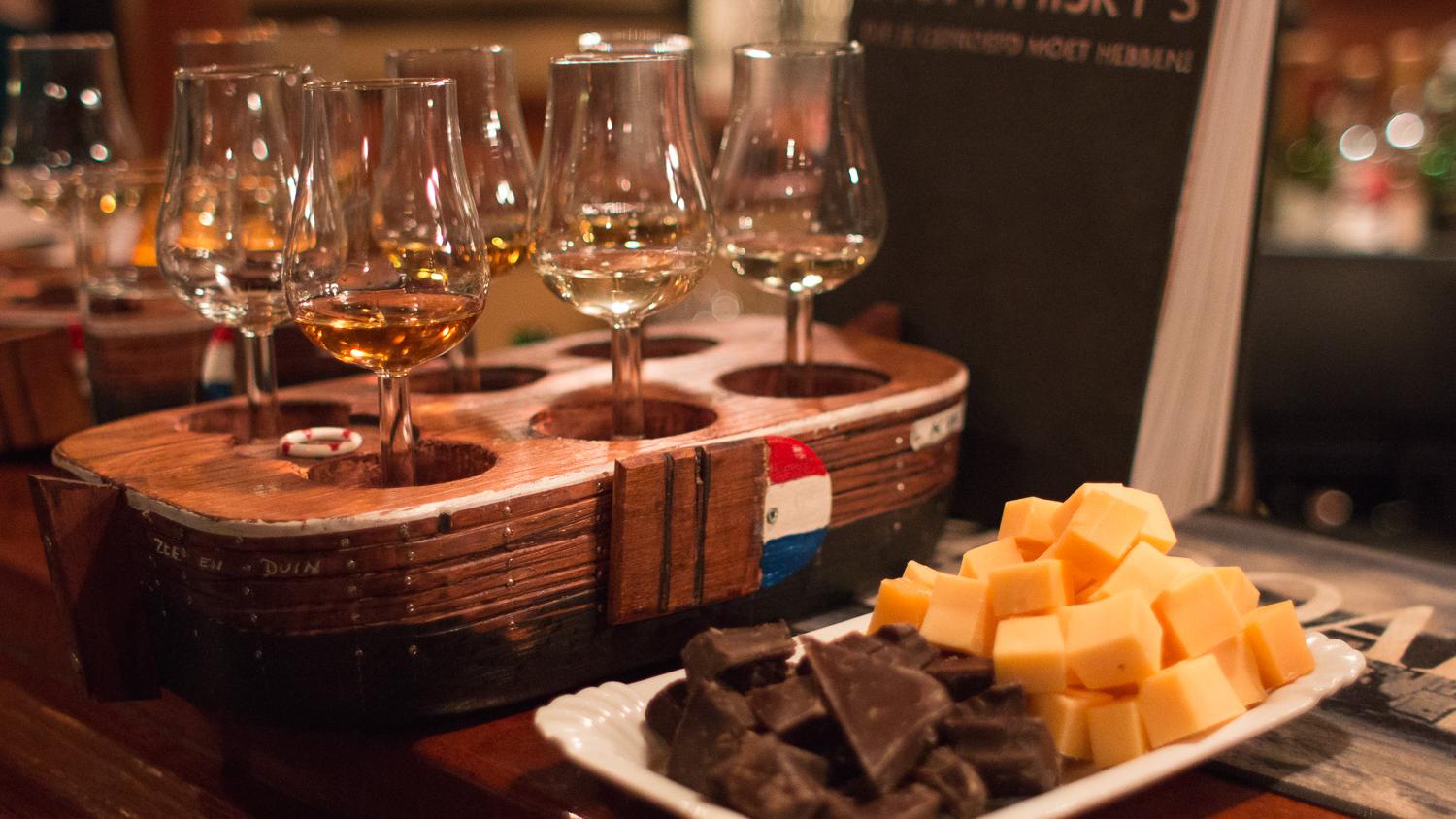The pruduction proces of Whisky and its varieties
Whisky explanation
The whisky production process has several steps. Namely: Malting, Kilning, Mashing, Fermentation, Distilling and Maturing.
Malting
The process starts with the moistening of barley so that the barley will germinate into malt. This is called malting. The water used comes from natural sources and is one of the determining factors for the final taste. By letting the water flow over peat, the barley gets a smoky character. By turning the barley regularly the temperature is controlled and the germination is also controlled. In the past, the barley was turned manually on a malt floor. This was a very labor intensive process because the barley must be turned every 4 hours 24 hours a day Nowadays this is done mechanically in drum malters. After a week the barley is ready to be eaten.
Mashen
During the mashing process the dried grains are finely ground in the dresser. Water is then added to the mashing tun. In the resulting grain mash, the starch will be converted into sugars over time. The resulting liquid is called wort. Regular stirring will separate the liquid from the solid particles. The solid particles (draff) will remain in the mashing tun and will be processed into animal feed.
Fermentation
The next important step in the process is the fermentation of the sugars. By adding yeast, the sugars will be converted into alcohol. This also releases carbon dioxide which causes the mixture to foam. The liquid that is produced is called 'wash' .However the alcohol percentage is then not much higher than in beer and amounts to approximately 7 to 8 volume percent. This all happens in a wash back. These wash backs are traditionally made of wood but have since been replaced by metal wash backs at many distilleries. These are easier to clean and are therefore more hygienic.
Distillation
The final step in the whiskey production process is distillation. The wash is heated in a copper distillation kettle above the boiling point.
Every distillery has its own unique boilers. The wash is cooked in the largest boiler, which is called wash-still. The alcohol will evaporate rather than the water and will rise where it ends up in a curled pipe (lyme arm). Here the alcohol will be condensed into liquid. This product is called low wines and contains approximately 25% alcohol. The liquid will be distilled for the second time in the spirit still. The impurities are removed from the distillate.
This distillate is called precursor (foreshot) and contains the lower alcohols that are toxic. The middle part, the middle course (middle cut) contains ethyl alcohol and is suitable for consumption. This is followed by a follow-up (after-shot) and consists of higher alcohols. A small part of this follow-up will be included in the distillate because this provides the aroma and taste of the whisky. These aromatic substances are called feints. The quality of the distillate is checked by means of the spirit safe, an arrangement of glass bowls. The colorless liquid that remains is called spirit and contains approximately 60 to 70 percent alcohol. Ripening After this, the liquid is stored in oak barrels. This for a minimum of 3 years but usually alot longer.
Because Scotland has few oaks, second-hand barrels were used. These were sherry, port or American bourbon barrels. Spanish sherry barrels were cheaper than English oak so the sherry barrels were used. When the sherry barrels became rarer, the American bourbon barrels were used. The US government did not allow oak wooden barrels to be used more than once to ripen bourbon whiskey, thereby giving the barrels a second destination.
In addition to boiling, the kettles and barrels have a major influence on the taste and character of the whisky. The sherry barrels give the whisky a sherry-like character, while the bourbon barrels give the spirit a touch of vanilla. The surrounding air can penetrate the barrel during ripening and give the spirit its own character due to the climate present. The part of the spirit that evaporates during ripening is called Angel's Share.
After the maturing process, the spirit is diluted with water. When the spirit is not diluted, we speak of a Cask strength whisky. Such a malt contains approximately 60% alcohol. When the spirit is bottled from a single barrel, you speak of a Single cask whisky. But usually the spirit is mixed with other vintages in order to preserve the whisky consistency. Hereby the youngest volume ultimately determines the age stated on the bottle.
When the whisky is mixed with whiskeys from other distilleries, you speak of a vatted malt or a blend. Some distilleries add caramel to darken the color, this caramel has no influence on the taste.
Finish
Some distilleries allow the spirit to be transferred to a different type of vessel after normal ripening to allow an additional ripening to take place. For example, port or madeira barrels are used for this. This maturation then takes about 6 months to 2 years.
Whisky varieties
Whisky consumption in the Netherlands consists of roughly 90% Scottish Whisky, of which 85% is blended Scotch and 5% is Malt Whisky. The remaining 10% consists of Irish, American and Canadian Whisk(e)y.
A difference is that the Scottish and Canadian drinks are written as Whisky, the Irish and American as Whiskey.
Broadly speaking, the production method of these Whiskeys is not too different from the Scottish one. However, they lack the specific Scottish climate conditions and the characteristic character of a Scotch.
Irish Whiskey
Deviates from, among other things, the use of other cereals. In addition to barley also oats and wheat. There is also 3x distillation (the Scottish 2x). The nesting (see below) does not happen above a peat fire.
American Whiskey
Produced in the middle east of the US in the states of Kentucky and Tennessee. Bourbon Whiskey must contain at least 51% corn and Rye Whiskey 51% rye.
Canadian Whisky
Is made on the basis of rye, mas and malted barley. Neutral grain alcohol is mixed with Rye-Whiskey in the blend.
Scotch Whisky
The Scottish Whisky is an age-old and completely unique product. The characteristic quality and characteristic taste depend on typical Scottish factors such as the exceptional climate, the purest water and the individuality of the peat. The name comes from the Celtic "Uisge Beatha" which means water of life. The name 'Whisky' was created through the 'Uisge' (pronounced: wieske) and 'Usky' bastards. It was produced in many thousands of small family or village distilleries and drunk in its own environment. The Scots are rightly proud of their beautiful, distinctive national drink that, even when consumed outside of Scotland, always retained something high-quality and aristocratic.
The importance of craftsmanship
The production of Scotch Whisky is a rather complex business and must be carried out with the utmost care. The craftsmanship and experience of the 'stillman' - responsible for the end product - is therefore very important. Simplified, the production process is as follows:
The best quality barley is germinated in a few days in moist condition on the malt floor (kiln) and then dried (eaten) over peat fire. The cereal grains are stripped of their germs and ground.
After this, with the addition of hot water in the Mash tub, the starch from the grain is converted into malt sugars and the wort is formed. The fermentation, the conversion of the sugars into alcohol, is then done with the addition of yeast in the wash basin. This process takes 2 to 3 days and yields a mixture that contains 7 to 8% alcohol.
Distilling can now be started. The first distillation takes place in the pot-still (a pear-shaped distillation kettle), the second distillation in the spirit-still.
After carefully separating only the middle part of the distillate, the Whiskey is born: colorless, sharp and about 67% alcohol. Rounding takes place through years of maturation in oak barrels (including barrels that were previously used for the maturation of sherry). The Whisky also gets its 'wood color' during this ripening process.
The minimum maturation period is 3 years but often 5 - 8 - 12 and even 15 years or more are used. If the age is indicated on a Whisky, this always refers to the youngest part in the blend.
Whiskey must contain at least 40% alcohol.
Malt, Grain, Single, Blended
Four aspects determine how the Whisky ultimately comes into the bottle and is offered to the consumer. These are: malt, grain, single and blended. From low to high we know:
Grain Whisky
A product that is produced more industrially, making the taste flatter and less pronounced. It is used for blending in the blended Whiskeys.
Blended Whisky
Is by far the largest category. It emerged a good century ago by combining different pronounced 'characters' to create a new concept. A blend can be made from dozens of different Whiskys (both grain and malt). The great art is to let the strong properties of each component work as harmoniously as possible in the final blend. Depending on the end result that one wants to achieve and the price that one wants to pay for it, a blended Whisky contains fewer or more younger and / or older composite Malt Whiskys.
Malt Whisky
The cream of the crop and made entirely according to the process described above The variety in the various malts forms the richness of the Scottish Whisky. There are therefore grinders who take pride in having a large assortment of Malts on the shelf. Indeed an underlining of craftsmanship.
Single Malt Whiskey
A pure malt from one distillery with its own character as a specific characteristic.

